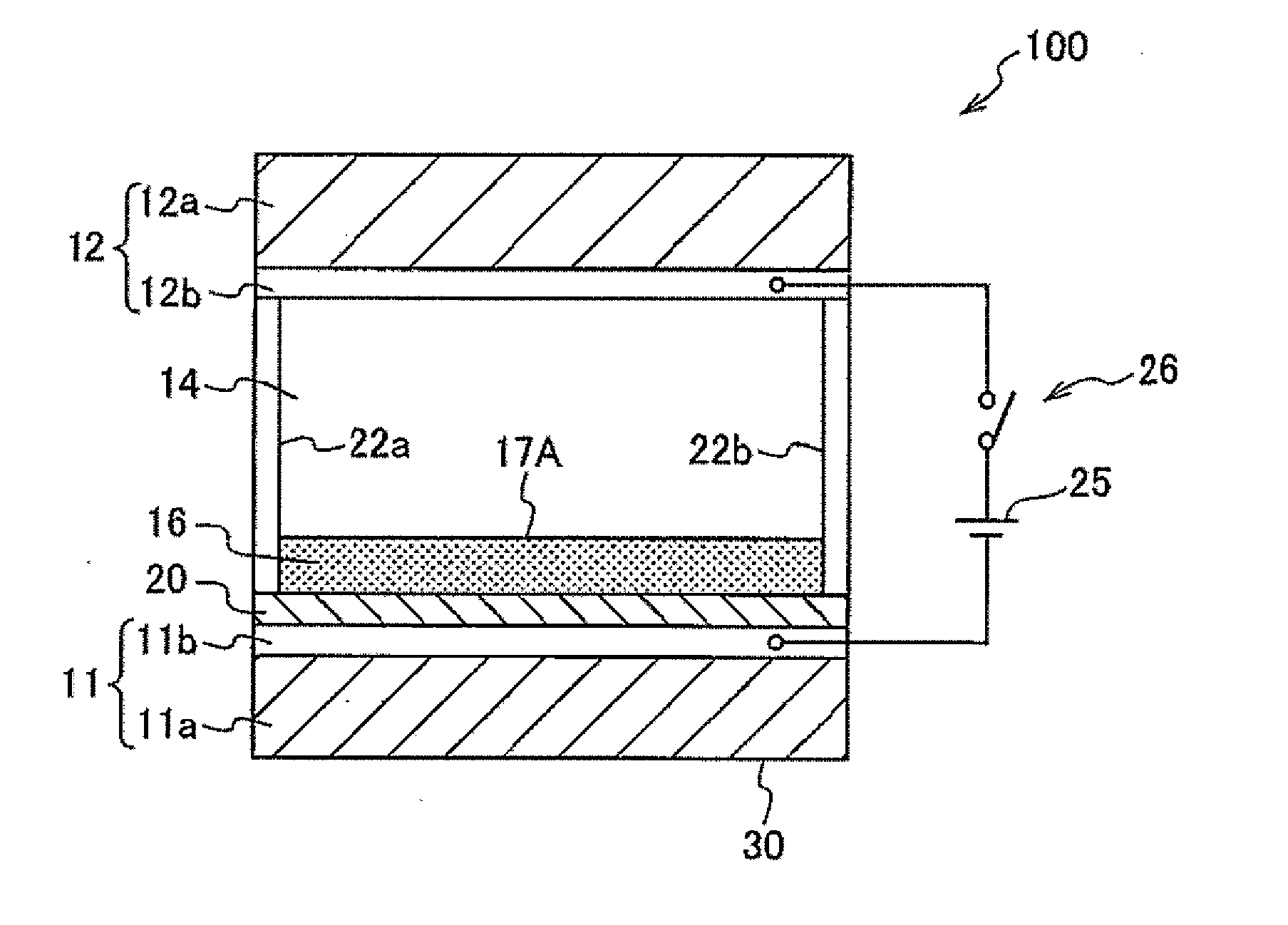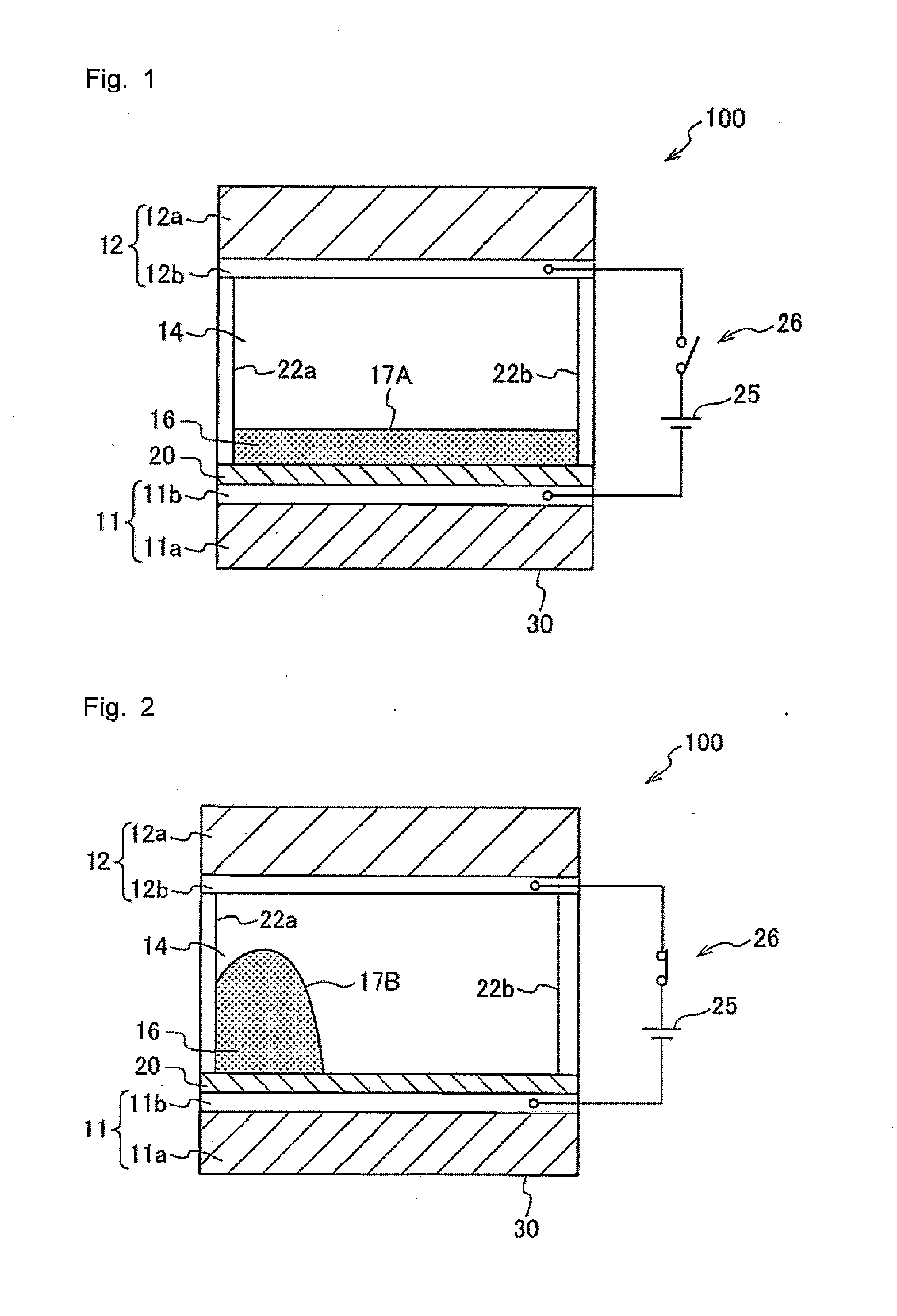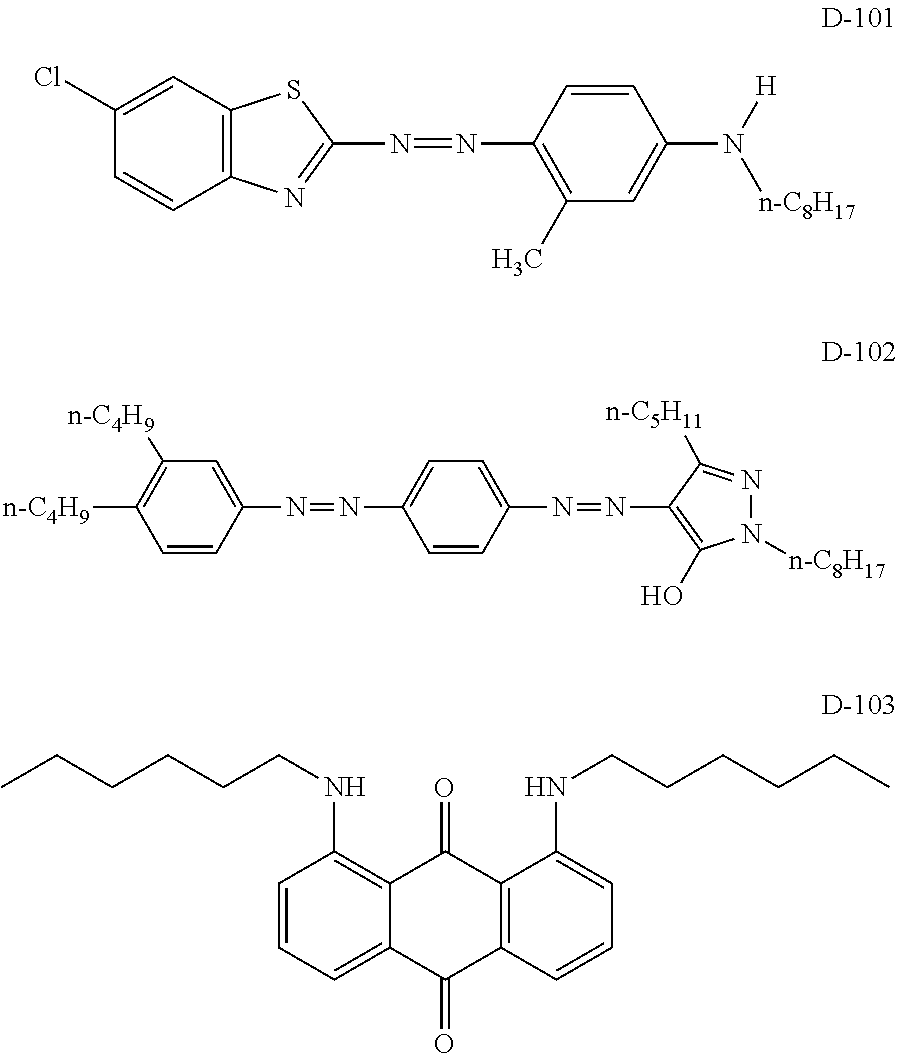Colored composition and image display structure
a color composition and image display technology, applied in the direction of instruments, non-metal conductors, conductors, etc., can solve the problems of dyes that do not ensure satisfactory solubility in non-polar solvents, dyes that do not provide color reproducibility fully satisfactory, and the solubility of methine dyes, anthraquinone dyes or azomethine dyes is maintained in a more favorable manner, excellent optical shutter properties, and excellent display contrast
- Summary
- Abstract
- Description
- Claims
- Application Information
AI Technical Summary
Benefits of technology
Problems solved by technology
Method used
Image
Examples
example 1
[0252]The dye shown above as Exemplary Compound D2-1 was dissolved in n-hexane as a solvent to make a 3% by mass solution, so that a colored composition (ink) was prepared. The colored composition (ink) obtained was evaluated with respect to its color, absorption maximum wavelength (λ max), absorbance (abs) and absorption coefficient (∈), and solubility (% by mass) of the dye in a solvent. The evaluation results are shown in Table 1.
[0253]Evaluation Method for Each Property
[0254]1. Color of Colored Composition
[0255]The color of the colored composition was visually evaluated.
[0256]2. Absorption Maximum Wavelength, Absorbance and Absorption Coefficient of the Colored Composition
[0257]The absorption maximum wavelength (λmax) and the absorbance (abs) of the colored composition were measured using a visible-light spectrophotometer (trade name: UV-1800PC, manufactured by Shimadzu Corporation). The absorption coefficient (∈) was calculated based on the Lambert-Beer law.
[0258]3. Solubility ...
examples 14 and 15
Preparation of Black Composition
[0282]Dyes selected from the group consisting of Exemplary compound D8-2 and Dye M-1 (the structure of which is shown below), which are dyes according to the invention, and Dyes Y-1 to Y-3, C-1 and C-2, each of which is not a mixture of stereoisomers, were dissolved in n-decane, such that colored compositions 1 and 2 having the following compositions 1 and 2, respectively, were obtained.
[0283]The structures of the dyes other than Exemplary Compound D8-2 are shown below. In Dye M-1, “C6H13” represents a normal alkyl group. Further, in the following structures, “Me” represents a methyl group, “Et” represents an ethyl group and “t-Bu” represents a tert-butyl group.
[0284]Colored Composition 1
[0285]Composition 1
Dye Y-2260 mgDye M-1 (dye according to the invention)200 mgDye D8-2 (dye according to the invention)160 mgDye C-1300 mgDye C-2100 mgn-decane980 mg
[0286]The colored composition 1 obtained was black. The dynamic viscosity of the colored composition 1 ...
examples 16 to 20
Preparation of Test Cell
[0291]A glass substrate (10 mm×10 mm) on which an indium tin oxide (ITO) film having a thickness of 100 nm was formed as a transparent electrode was prepared. On the surface of the ITO film, a fluoropolymer (tradename: CYTOP manufactured by Asahi Glass Co., Ltd., model CTL-809M) was coated in a thickness of 600 nm, thereby forming a fluoropolymer layer as a hydrophobic insulating film. Subsequently, a picture frame-shaped silicone rubber wall left after cutting out a 8 mm×8 mm×50 μm-sized piece from the central portion of a 1 cm×1 cm-sized silicone rubber (a sealing material having a thickness of 50 μm; SILIUS (tradename) manufactured by Fuso Rubber Co., Ltd.) was placed on the fluoropolymer layer, thereby forming a display area. A colored composition was injected, in a thickness of 4 μm, into the space enclosed by the silicone rubber wall. Onto the injected colored composition, ethyleneglycol (hydrophilic liquid) was further injected in a thickness of 46 μm....
PUM
 Login to View More
Login to View More Abstract
Description
Claims
Application Information
 Login to View More
Login to View More - R&D
- Intellectual Property
- Life Sciences
- Materials
- Tech Scout
- Unparalleled Data Quality
- Higher Quality Content
- 60% Fewer Hallucinations
Browse by: Latest US Patents, China's latest patents, Technical Efficacy Thesaurus, Application Domain, Technology Topic, Popular Technical Reports.
© 2025 PatSnap. All rights reserved.Legal|Privacy policy|Modern Slavery Act Transparency Statement|Sitemap|About US| Contact US: help@patsnap.com



